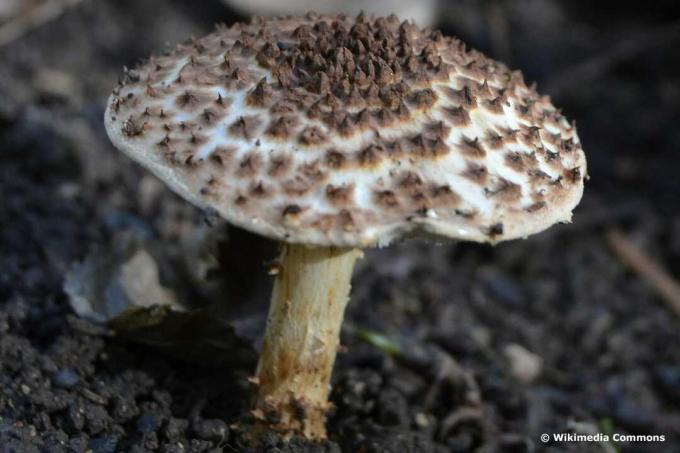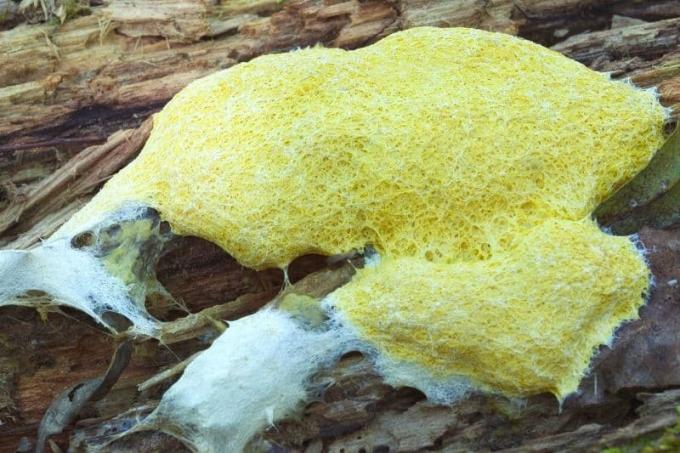
In most raised beds, mushrooms will sooner or later sprout alongside the vegetables. That's no reason to worry, the mushrooms simply find optimal living conditions in the raised bed.
In a nutshell
- Mushrooms in raised beds are not uncommon
- Pictures can help determine
- even poisonous mushrooms do not harm vegetables
- Elimination not difficult
- as a precaution, do not water too much and use wood-poor soil
Table of contents
- How do mushrooms grow in raised beds?
- Common types of mushrooms in raised beds
- Measures against fungi in raised beds
- Prevent fungi in raised beds
- frequently asked Questions
How do mushrooms grow in raised beds?
Mushrooms grow in raised beds when they find good growing conditions there. However, the spores are usually present long before that. For example, they can be in the substrate or even in the wood of the raised bed walls. If there is a warm, humid climate in the bed, these are ideal conditions for mushrooms. The growth of the roots, the so-called mycelium, is usually not even noticed. The fungus only becomes visible when the fruiting bodies grow.
A notice: A dry raised bed is not always a guarantee of no mushroom growth. Spores can remain invisible for a very long time.
Common types of mushrooms in raised beds

Source: WikiCecilia, Lepiota acutesquamosa (Forêt domaniale de Puvenelle, 2019.10.24), Edited from Plantopedia, CC BY 4.0
Not all mushrooms can grow in raised beds. Usually these are small mushroom species or those that depend on wood. The most common include:
- Porlings directly on the wood (e.g. B. Fence Leaf (Gloeophyllum sepiarium)
- small Tintlings (eg. B. Shaggy Tintling (Coprinopsis cinerea))
- small umbrella species (e.g. B. Rough Spiny Umbrella (Lepiota aspera))
If animal manure is used to fertilize the raised bed, dung or dung fungi can also colonize it. Identifying the individual species is very difficult and sometimes not even possible with pictures.
Special feature Yellow tan blossom
The Yellow tan blossom (Fuligo septica) is a slime mold also known as witch butter. It is not like any ordinary mushroom. Pictures of the yellow tan flower often show a somewhat spongy, yellow mass. This can be found in the raised bed on the wood, but also directly on the plant stems and occurs particularly often after rain. This fungus is not dangerous to either plants or humans. But he has interesting qualities. This fungus can change its location, it "migrates" and is even said to be attracted by food, such as oatmeal.

Measures against fungi in raised beds
The fungi do not necessarily have to be fought, but care should be taken that neither children nor pets eat them. If necessary, getting rid of them is not particularly difficult. It's enough for that the top layer of earth drier than usual. The fruiting bodies can easily be pulled out of the ground and composted. The spores can still spread, but where exactly can not be predicted. If you take it very seriously and really want to get rid of the mushrooms, you can replace the top layer of substrate.
Porlings on the raised bed
It is more difficult to get rid of polypores on the wood. The fruiting body can be cut off, but the mycelium is in the wood and ensures that it decomposes over time. A so-called brown rot develops, which causes the wood to rot from the inside. This is usually not visible, but can be recognized by the fact that the wooden boards of the raised bed are soft to the touch. Infested boards should be replaced. The entire raised bed may need to be rebuilt.
A notice: Chemical agents against fungi in raised beds are neither permitted nor necessary in the home garden.
Prevent fungi in raised beds

In fact, fungi in raised beds are not that easy to prevent. An important aspect is the location of the raised bed. It should be as sunny as possible and in such a way that air can circulate well all around. This not only benefits the plants, but also ensures that no waterlogging forms. A drainage layer of larger branches and twigs in the lower part of the raised bed also supports the drainage of water.
Other preventive measures:
- not too much and only as needed pour and fertilize
- Use substrate without wood fiber content
- do not use wood that is obviously infested with fungi
- Do not dispose of any leftover mushrooms in the raised bed or compost
- Stone raised beds, metal or treated wood
frequently asked Questions
In most cases, the fungi are completely harmless and cannot harm vegetables. They take away neither light nor nutrients from the plants. On the contrary, some types of fungi enter into a symbiosis with other plants, whereby the participants support each other's growth. Diseases or pests are also not transmitted from fungi to other plants.
Cultivating edible mushrooms is very demanding and only works with special mushroom cultures. However, these can also be created in a suitable raised bed. You can find out from the manufacturer in retail whether this works.
Yes, unfortunately this is possible. Organic soil is not treated as heavily as conventional garden soil. To kill the spores, you can try sterilizing the soil yourself. However, since a lot of soil is required for raised beds, this is probably not feasible for practical reasons.



